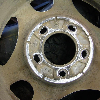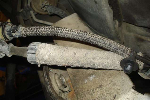DgtlExplorer
New Member
- Joined
- April 26, 2008
- Messages
- 3
- Reaction score
- 0
- City, State
- Florida
- Year, Model & Trim Level
- 94 EB Blue / 94 EB Maroon
Sigh of relief - thanks to all who posted - this is awesome info
I dropped a tank on my first 94 EB about 10 yrs ago in 98 degree summer heat and it was NO FUN after getting the pump out i saw the cause of the problem was the two wires inside the tank (power?- red and ground?- black) had actually rubbed themselves together so bad they arced and were welded together !!!YIKES!!!!!! i couldnt believe it didnt go kablammo! should have taken a pic but anyways today my pump went out on my second 94 EB and i was totally bummed about having to drop the tank (which was full of course lol) in the muggy heat here in florida (fireants are crazy here too ouch!!) so i happened upon this great thread and now im really relieved....thanks for everyone's pics, descriptions, and shared expereinces . you all made my day!!
Matt
:exp:
I dropped a tank on my first 94 EB about 10 yrs ago in 98 degree summer heat and it was NO FUN after getting the pump out i saw the cause of the problem was the two wires inside the tank (power?- red and ground?- black) had actually rubbed themselves together so bad they arced and were welded together !!!YIKES!!!!!! i couldnt believe it didnt go kablammo! should have taken a pic but anyways today my pump went out on my second 94 EB and i was totally bummed about having to drop the tank (which was full of course lol) in the muggy heat here in florida (fireants are crazy here too ouch!!) so i happened upon this great thread and now im really relieved....thanks for everyone's pics, descriptions, and shared expereinces . you all made my day!!
Matt
:exp:














